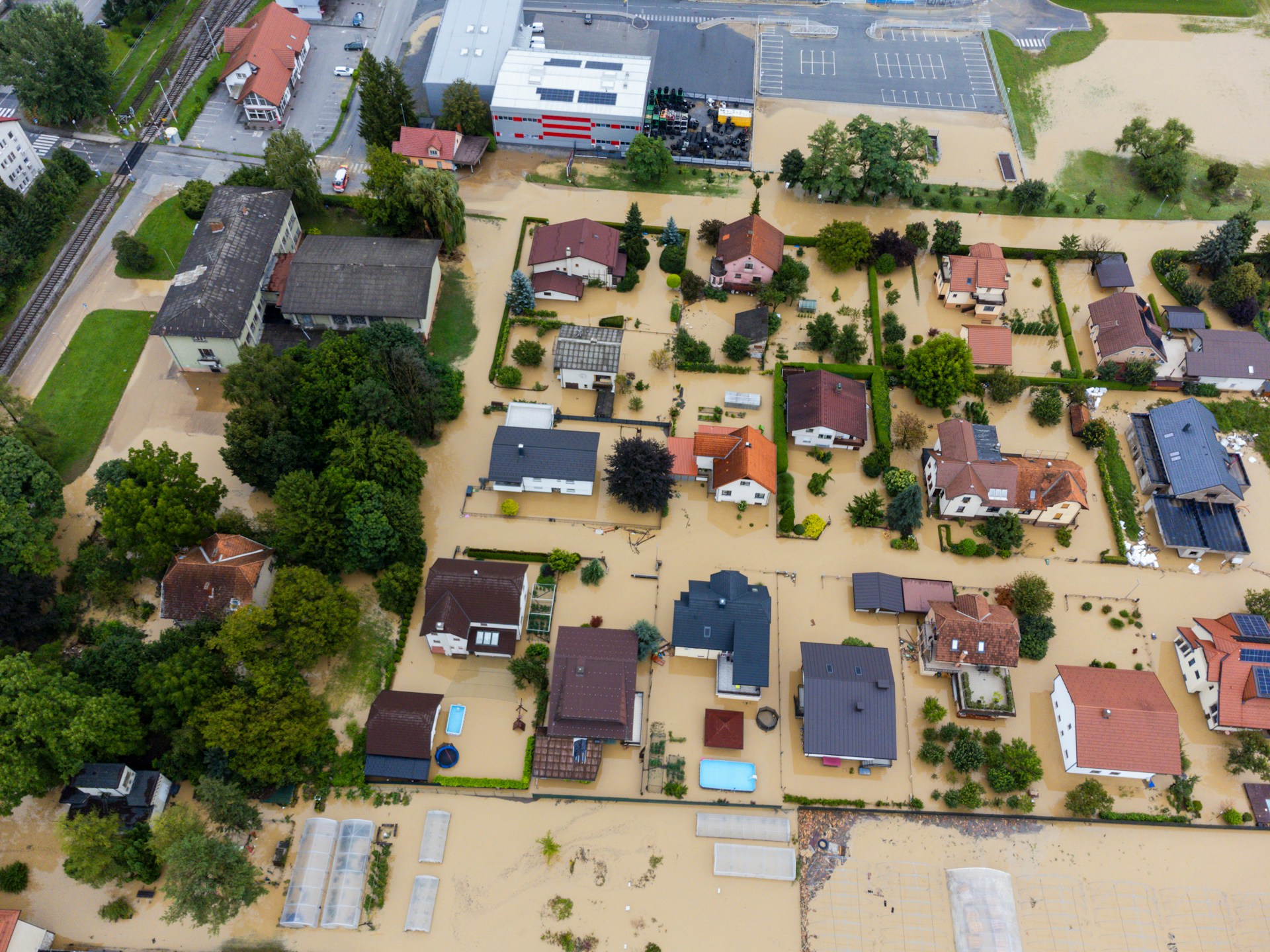Two crises. Both are global, both generate severe impacts on human societies. If you want to understand, address, and explain both of them to the public, you need the support of science: you can only rely on science-based information. However, despite their similarity, COVID-19 and climate change have different places and roles in the media’s agendas and public interest.
“The first point to stress is that the science behind COVID-19 and the science behind climate change are at very different stages”, James Painter explains. Dr. Painter is a renowned expert in science communication, and a Research Associate at the Reuters Institute for the Study of Journalism, where he directed the Journalism Fellowship Programme. As Dr. Painter is currently focusing his research on science communication and on the analysis of media coverage of climate change, we asked him which are, from his point of view, the main similarities and differences in how journalists approach climate change and COVID-19. James Painter not only answered our questions but also provided plenty of references, research, media articles, data and examples.
In the past, the media have tended to focus much more on the ‘doom and gloom’ aspects of climate change, at the expense of spending more time on the solutions or opportunities. Positive adaption stories represent a very low percentage of climate stories. However, there is evidence that this is changing in more recent times.
“Scientists already know so much about the human drivers of climate change, the likely temperature projections and impacts, and the societal changes that are needed to bring down emissions. On the other hand, the science behind COVID-19 is preliminary, with many uncertainties about its exact origins, the true rates of infection and mortality, whether antibodies prevent future infection or whether the virus will mutate so immunity may only be seasonal, and the time needed to roll out a vaccine; and in the realm of behavioural science, the likely individual and societal responses to information about it. So any comparisons between media treatments of the science information should be very cautious.
Secondly, we know a lot about the way legacy media, digital-born media, and social media have covered climate change in recent years. In contrast, very few academic studies have yet been published about the media coverage of COVID-19.”
Although there hasn’t been much research up to now, it is increasing rapidly. Can we already identify something new about the relationship between media and science in times of crisis?
Some studies are already emerging about levels of trust in the media’s coverage of the corona crisis. My colleagues at the Reuters Institute have published survey results from the UK showing that most people rely heavily on news organisations for information about the coronavirus; a majority (57%) rate news organisations as trustworthy sources of information specifically on the coronavirus, which is considerably higher than the figure for those who trust the news in general (38%).
On the coronavirus, the media score much higher for trust than politicians (38%), messaging applications (9%), search engines (31%), and social media (13%), and video sites (12%). Moreover, 60% think the BBC has done a good job of covering the crisis. Other broadcasters score well, as does the Guardian.
There is evidence that individuals and organized groups particularly in the USA, who have historically been climate deniers or policy sceptics, have turned their attention to the COVID-19 crisis and found a voice in the (right-leaning) media.
Part of the reason that the BBC and the Guardian have performed well is that they can count on an established team of health and science correspondents. In contrast, in many other media outlets, reporters and editors with little or no medical or public health background have been reassigned to cover the pandemic without a solid understanding of scientific methods and research caveats. For example, they may fail to ask basic questions about whether new research has been (sufficiently) peer-reviewed and to give contextualised details of what is known already.
As a recent article in the Harvard Gazette argued, inexperienced reporters are not yet knowledgeable enough to report critically and authoritatively on the science, and at times rely on traditional journalism values like balance, novelty, and conflict. ‘In doing so, they lift up outlier and inaccurate counterarguments and hypotheses, unnecessarily muddying the water.’
So here is one parallel with climate journalism in that we know that right-leaning media, particularly in Anglosphere countries like the USA, the UK and Australia, have given far too much space to outlier climate denialists, whose arguments are often amplified on social media. In the past, this has been done in the name of (false) balance.
There is evidence that individuals and organized groups particularly in the USA, who have historically been climate deniers or policy sceptics, have turned their attention to the COVID-19 crisis and found a voice in the (right-leaning) media.

Are there any examples of this kind of science denialism?
The Desmog Blog has compiled examples of such sources making arguments in favour of opening the economy despite data suggesting this could sharply increase coronavirus cases; against lockdowns as an infringement on basic rights; or in favour of sacrificing a vulnerable portion of the population for the greater good. Some academics also argue that many on the political right in the USA have progressed through the same five stages of science denial that are found in climate denialism.
The WHO [World Health Organization] has said there is an ‘infodemic’ of disinformation about coronavirus spreading rapidly around the world. Disinformation (where the intention is to deliberately mislead) or misinformation (where the news is inaccurate or a result of poor journalism or research) is not just confined to sections of the media in the USA. There are already examples from Australia to India to the UK.
Part of the solution – as with climate coverage – is for journalists to constantly question their information and sources. Several fact checking initiatives such as the BBC Reality Check and Infotagion are most welcome. But there is some evidence that fact-checking sites in general have positive, but only modest effects.
Data is a big part of journalistic work on both climate and COVID-19. How has the media dealt with quantification, numbers, and uncertainty?
There have been studies showing that with climate change science, (particularly non-specialist) journalists find difficulties with statistics, ranges and (epistemic) uncertainties, and they avoid them partly because they think their audiences find them difficult.
This would seem to be partly the case also with coverage of the Corona crisis. At least in the UK, there does not seem to be enough basic journalistic questioning of the strengths and limitations of the data being presented by government officials. I may have missed it, but I have not heard the two basic questions being asked about the presentation of projections or forecasts, namely ‘what is the probability of x happening?’, and ‘how confident are you in these projections’?
Journalists have also at times been guilty of cherry-picking data results and mixing up predictions and scenarios, particularly in headlines choosing the worst-case scenarios at the end of the range.
To be fair to the journalists though, they are often simply repeating the data politicians are presenting in briefings about the coronavirus. Professor David Spiegelhalter, chair of the Winton Centre for Risk and Evidence Communication at the University of Cambridge, has accused UK government officials of presenting an embarrassing ‘number theatre’, in which the strengths and limitations of the data are not made clear.
Some international media outlets have stressed the uncertainties inherent both in the corona-related data and in the scientific method in general, but these seem to be the exceptions and not the rule. In terms of communication, recent research has shown that being transparent about uncertainty does not harm the public’s trust in the facts or in the source.
Journalists are always in a rush. Time is short when working in a newsroom, you have to find the news and publish before your competitors. Part of the public discourse is focused on topics that need to be analyzed in-depth with the help of experts. For example, scientists say there is a connection between zoonotic disease spillover and land use (forest fragmentation), which implies that there is a strong connection between the COVID-19 outbreak and issues that are related to climate change. Do you see any risks for the reliability of science journalism and science information in this context, where science-based information becomes even more critical and media outlets need to publish their articles quickly?
I am not an expert in the connection between zoonotic disease spillover and deforestation or land use changes, but we do know that research into how biodiversity or environmental disturbance could affect animal-borne disease risk at a global level has so far been limited. In its comprehensive 2019 report on biodiversity, IPBES (p.116, chapter 3) wrote that ‘Causal mechanisms are only well known for a handful of infectious diseases and it is sometimes hard to pick apart the drivers of disease to isolate the direct effects of environmental change from other human actions’.
Part of the solution – as with climate coverage – is for journalists to constantly question their information and sources. Several fact checking initiatives are most welcome.
However, we do know that other coronaviruses (MERS, SARS) likely originated in bats, and that modern agricultural practices were one of the causes of spillover of such viruses from natural hosts to humans. We also know from one 2018 study on bats in Asia, which has been widely quoted in the media, that the risk of emergence of a novel bat-coronavirus could ‘be envisioned’, and that this was linked to the observation that: ‘Owing to evolving land-use, bat populations are setting up in areas closer to human dwellings’, and that the ‘effect of anthropized environments on bats with differing biological needs results in a higher concentration and biodiversity of bat-borne viruses which increases the risk of transmission of viruses through direct contact, domestic animal infection, or contamination by urine or faeces’.
What is important here is that the study uses the concept of increased risk, which some journalists have interpreted as a prediction, for example in this article by the Guardian. However, the great advantage of online coverage is that readers can click through to the original journal article to check the findings.
There is, of course, a small danger that if journalists overegg the links, they could perhaps undermine the credibility of the science if later something turns out not to be the case. But in general, I do think it is legitimate for journalists to examine the links, provided i) any uncertainties or limitations are made clear, ii) a proper context is given including the state of knowledge on the issue, and iii) a wide variety of sources are cited.
A very comprehensive guide addressing the question of whether climate change and biodiversity loss raises the risk of pandemics can be found in the excellent niche site Carbon Brief.
Is there a lesson that journalists and media outlets can learn from COVID-19 in order to improve future coverage of climate-related issues?
In the past, the media have tended to focus much more on the ‘doom and gloom’ aspects of climate change, at the expense of spending more time on the solutions or opportunities. Positive adaption stories represent a very low percentage of climate stories. However, there is evidence that this is changing in more recent times.
The post-COVID-19 economic recovery offers a marvellous opportunity for the media to give prominence to the opportunities for green stimulus packages to reignite the economy. There seems to be some momentum in the public sphere to discuss and enact policies that would ensure net-zero climate-friendly economic measures as part of the recovery programme.
Parts of the media seem to be already giving examples of how some cities are encouraging much greater use of bicycles for mobility, making an opportunity out of a crisis. Brussels, Milan, Berlin and a host of other cities are introducing new bike lanes, wider bike lanes or bans on cars.
The coronavirus crisis gives data journalists plenty of material to display complicated information in visual form for greater understanding such as this great interactive chart in the FT. Climate visuals and graphs were already well-established, but this could further develop the trend.
The crisis has also spawned lots of great initiatives such as this reporting project to tell the human stories of the 95% of the 20,000 coronavirus victims in New York, who haven’t had an obituary or a death notice published at a news outlet.
Al Jazeera’s Listening Post programme has highlighted four projects across Brazil, the USA, Europe and China demonstrating innovative ways of bringing vital pandemic information to audiences, often ‘delivered in new ways to help understand a story laden with complexities’.
When we talk about climate change we look towards the future, and the future belongs to the youngest generations. You are among the organizers of an event which has got the meaningful title: Improving climate journalism, engaging the youth. Why a conference on journalism, climate and youth engagement?
The BBC and other Public Sector broadcasters across Europe are worried about not reaching enough of a youth audience, so this conference is partly about sharing success stories or initiatives in this space. But it is also about deepening the debate about what is good climate journalism that is both true to the science, but also more innovative and engaging for different types of audiences not normally reached by legacy media.







